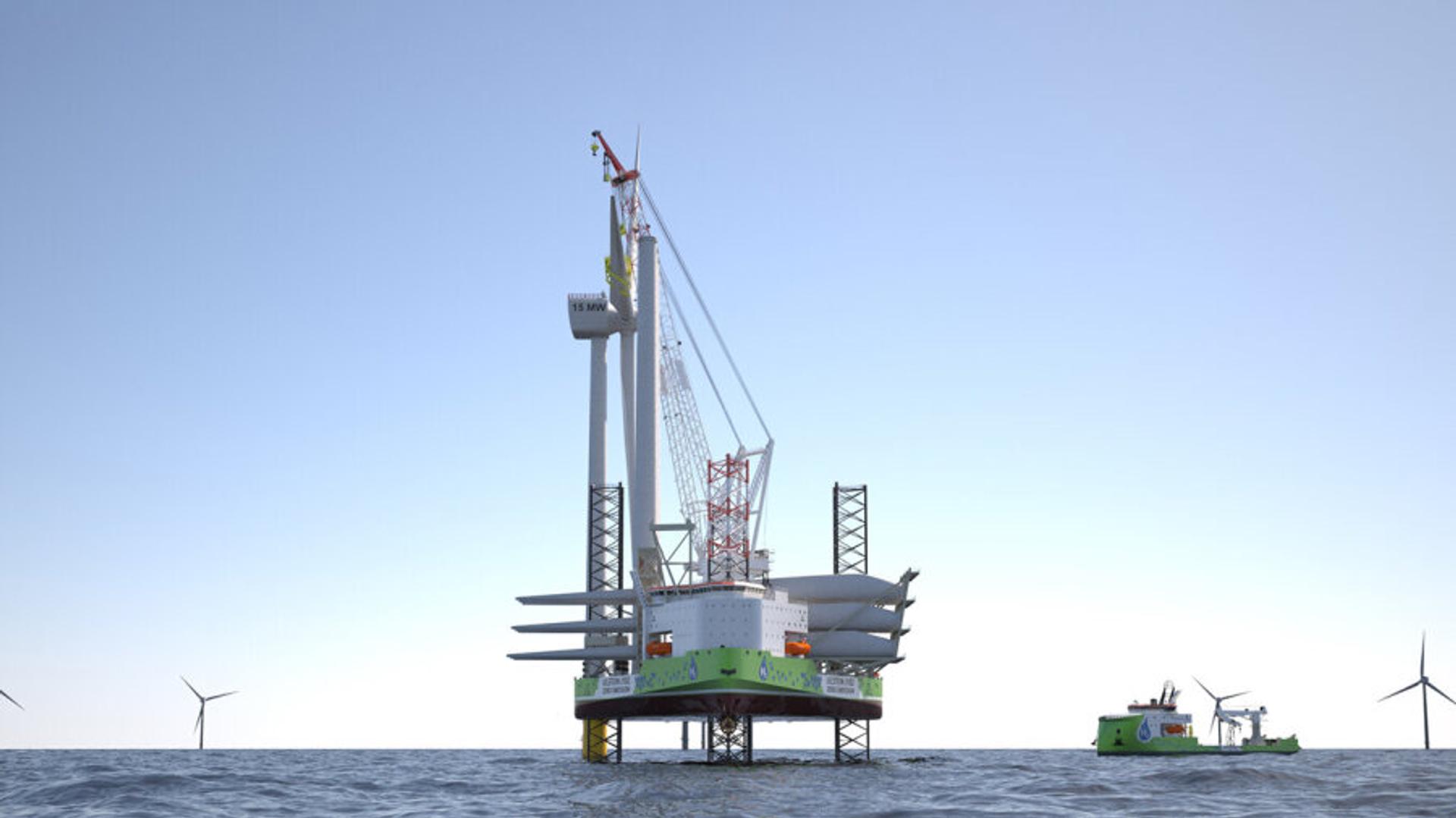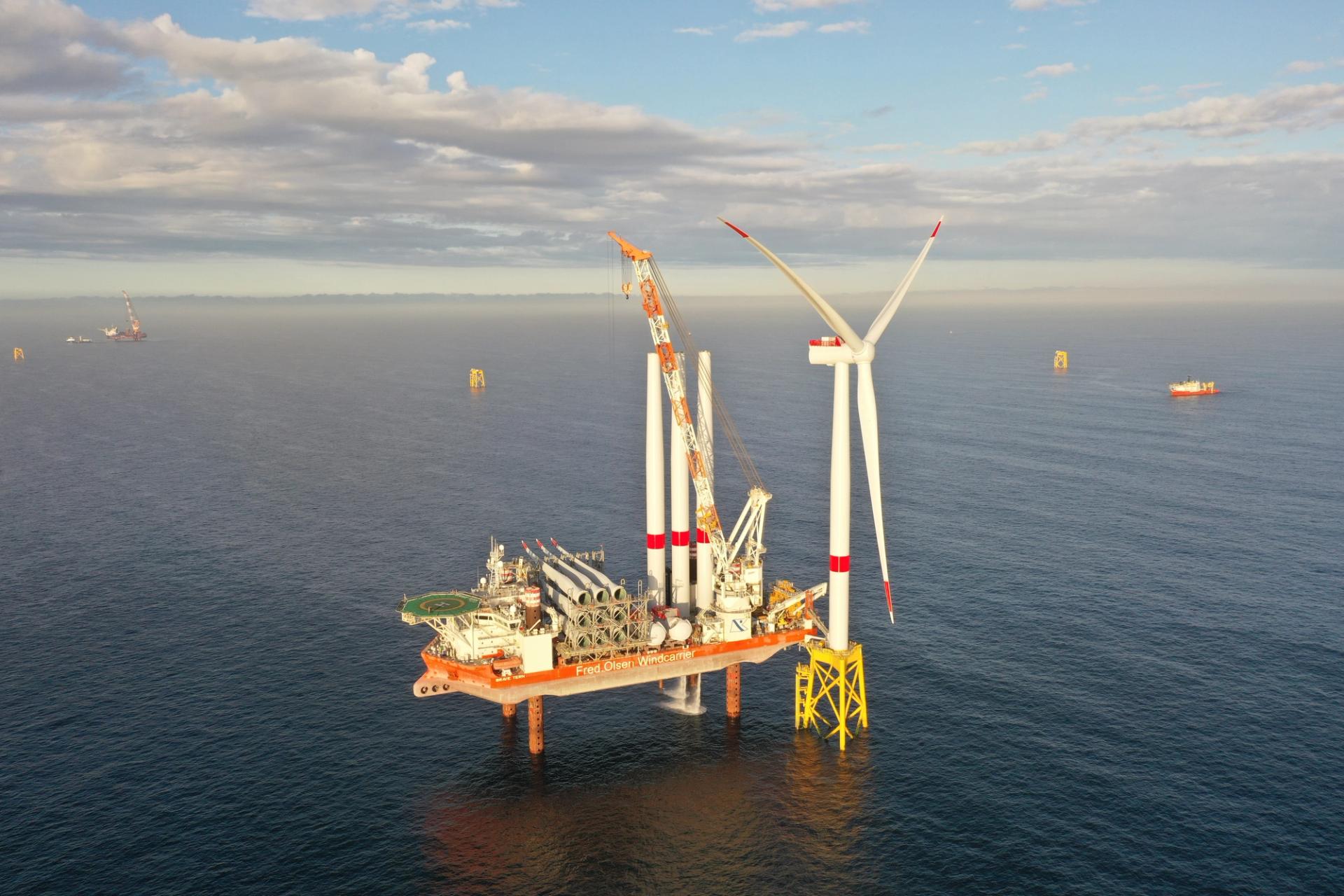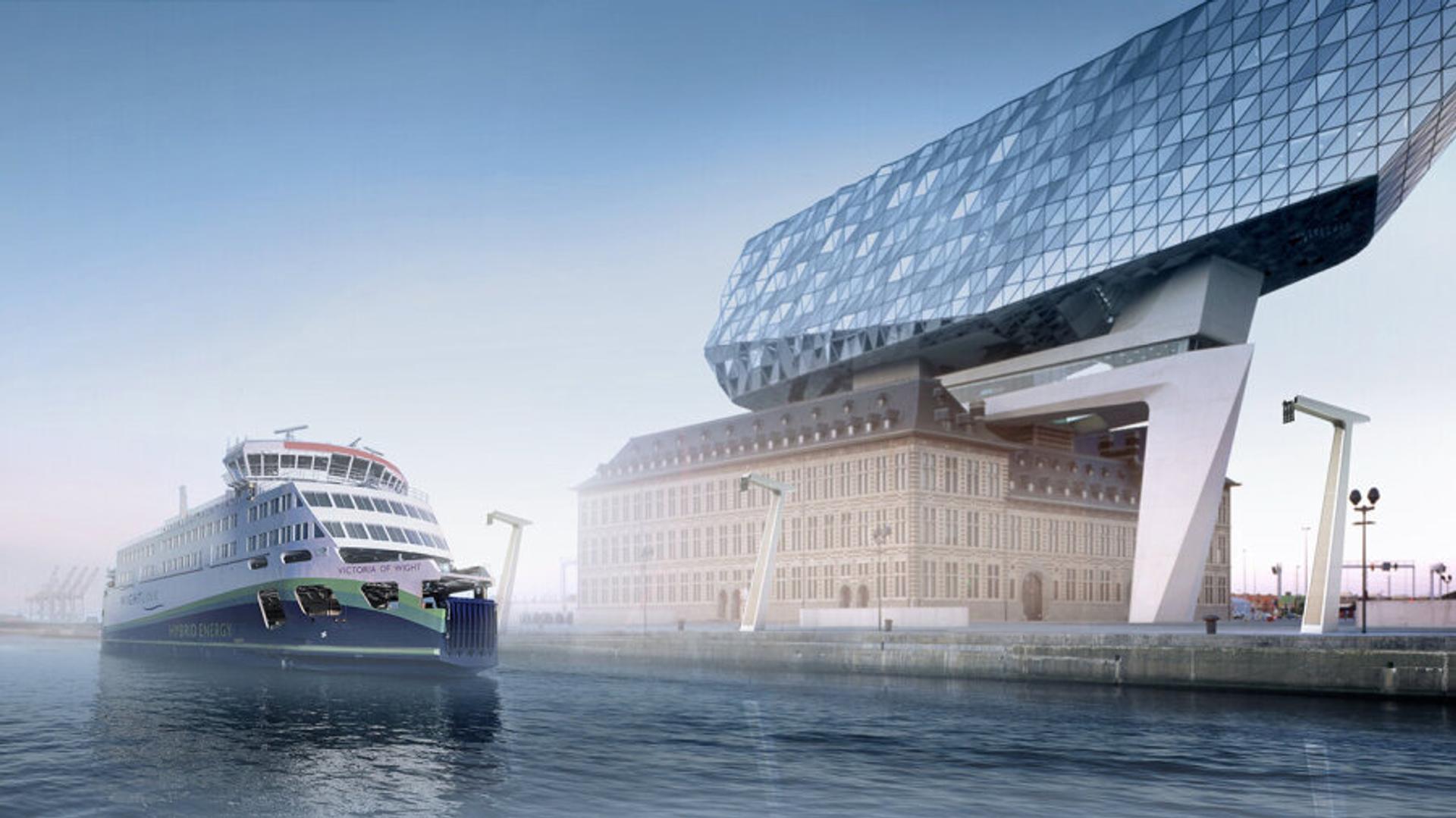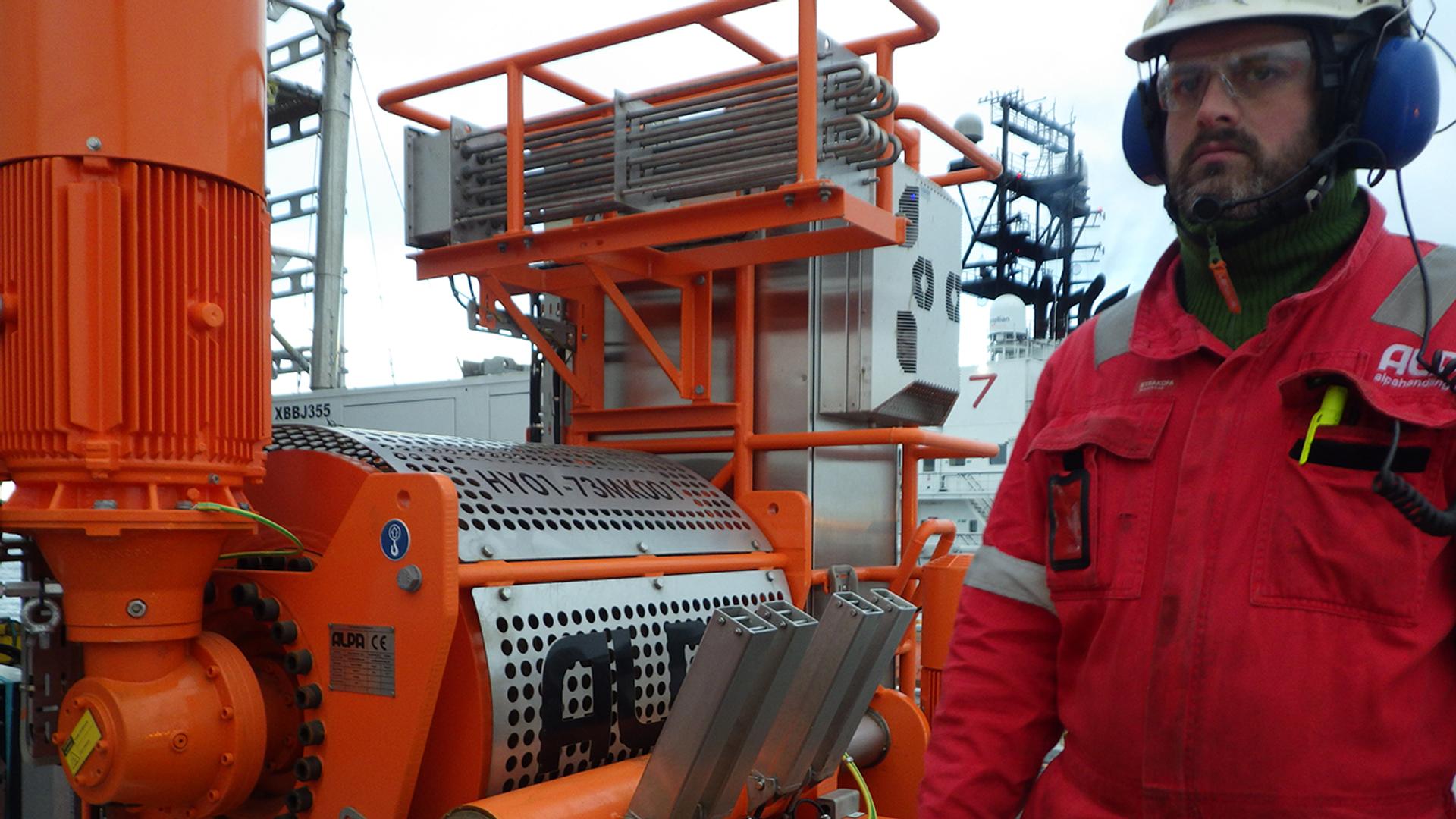Around the world with Team Norway: Germany dedicated to offshore wind development

The country has ambitious plans to reach 30 gigawatts (GW) of offshore wind capacity by 2030, which corresponds to around 15 per cent of Germany’s annual electricity consumption.
“By 2035, the aim is to reach 40 GW, and finally 70 GW by 2045,” says Michelle Duarte, Senior Advisor at Innovation Norway Germany. Her job is to drive business development and spearhead Norwegian companies’ expansion in Germany.
Steady focus on offshore wind in Germany
The first offshore wind installation in Germany was the Alpha Ventus project in 2010, located in the North Sea. Since then, the country has been consistent in its approach to offshore energy.
“After the Russian invasion of Ukraine, offshore wind became even more relevant for Germany, as the country sought to address its energy sourcing. Offshore wind offers a unique opportunity because it is a sustainable and renewable energy source, making it a priority for the German government,” Duarte explains.
Germany is primarily focused on the North Sea and the Baltic Sea. The country also recognises the need to advance infrastructure development to connect offshore power to the grid.
“There are, of course, challenges, but development has been steady. Once technical challenges and infrastructure bottlenecks are addressed, the industry will grow significantly, presenting a major opportunity for Norwegian companies,” she adds.
 Green, hydrogen-powered offshore turbine installation vessel from UlsteinThe ULSTEIN J102 zero-emission wind turbine installation vessel uses a hydrogen-hybrid fuel system to dramatically reduce vessel emissions and improve the environmental footprint of offshore wind farms.
Green, hydrogen-powered offshore turbine installation vessel from UlsteinThe ULSTEIN J102 zero-emission wind turbine installation vessel uses a hydrogen-hybrid fuel system to dramatically reduce vessel emissions and improve the environmental footprint of offshore wind farms. Fred. Olsen Windcarrier delivers state-of-the-art offshore wind installationFred. Olsen Windcarrier provides cost-effective installation, operation and maintenance of offshore wind turbines. “We support every stage of the wind farm lifecycle with our versatile jack-up vessels and experienced crews,” says Johan Rasmussen, Senior Marketing and Communication Manager at Fred. Olsen Windcarrier.
Fred. Olsen Windcarrier delivers state-of-the-art offshore wind installationFred. Olsen Windcarrier provides cost-effective installation, operation and maintenance of offshore wind turbines. “We support every stage of the wind farm lifecycle with our versatile jack-up vessels and experienced crews,” says Johan Rasmussen, Senior Marketing and Communication Manager at Fred. Olsen Windcarrier.
Grid bottlenecks and port infrastructure
Germany’s offshore wind ambitions face two major challenges: grid connection bottlenecks and insufficient port capacity.
“First of all, there is the grid connection. There needs to be further expansion and enhancement of the grid to connect offshore wind energy to onshore systems. Without this, the country cannot receive or effectively utilise all the energy that will be produced offshore,” says Duarte.
Addressing this requires both investment and regulatory improvements to eliminate bureaucratic obstacles and streamline grid connection processes. With expertise in grid connection, systems integration and engineering solutions such as cabling and substations, Norwegian companies are well equipped to solve these challenges.
Secondly, ports need to be developed at a faster pace. According to Duarte, Germany recently conducted a port strategy assessment to determine what needs to be done to sufficiently expand port infrastructure to handle planned offshore wind development.
 BlueEco® Shore Power makes shipping ports quiet and greenBluEco® Shore Power connects ships at berth to the onshore power grid, reducing carbon emissions, noise pollution and operating costs. “Our innovative system helps ports and shipping lines to reduce their environmental impact and achieve their climate targets,” says Kenneth Husebø, Sales Manager Shore Power at Blueday Technology.
BlueEco® Shore Power makes shipping ports quiet and greenBluEco® Shore Power connects ships at berth to the onshore power grid, reducing carbon emissions, noise pollution and operating costs. “Our innovative system helps ports and shipping lines to reduce their environmental impact and achieve their climate targets,” says Kenneth Husebø, Sales Manager Shore Power at Blueday Technology. Zinus shore power connectors for ferries and service vesselsZinus flexible and adjustable shore power solutions connect a variety of marine vessels to shore power quickly and easily.
Zinus shore power connectors for ferries and service vesselsZinus flexible and adjustable shore power solutions connect a variety of marine vessels to shore power quickly and easily.
In Germany, 36 turbines totalling 377 MW were connected to the grid in the first half of 2024. In addition, 73 new foundations have been installed. To sustain and enhance this momentum, industry associations are focusing attention on strengthening supply chains and building out port infrastructure.
The Federal Association of Offshore Wind Energy (BWO), for instance, is calling for the upgrade of existing facilities and construction of new ones, which are essential to meeting the set targets for offshore wind expansion.
Key offshore wind ports such as Cuxhaven are already bolstering their storage, assembly and transport capabilities to meet these demands. Additionally, the Port of Kiel is making strides in green shipping innovations, integrating shore power facilities to cut emissions from docked vessels. Ensuring that German ports are “offshore wind ready” is critical to preventing supply chain disruptions.
An additional challenge is that while the offshore wind expansion can create a large number of jobs and economic opportunities, there is a shortage of skilled workers. “The industry is growing so quickly that there is a lack of manpower to deliver on these plans,” Duarte points out.
Call for policy and investment support
Industry associations are advocating for policy reforms and increased investments to facilitate these necessary developments. They stress the importance of adapting tenders (competitive bidding processes) to reduce cost pressures and promote timely project realisation. Industry associations also emphasise that revenues from tenders should be reinvested into expanding port and supply chain capacities to ensure the sustainable growth of offshore wind energy in Germany.
Entering the German market: a high-impact strategy
Germany presents powerful opportunities for Norwegian developers, but entering the market requires strategic precision.
“Germany is a powerhouse in technology development. Norwegian companies must recognise the technical competencies of their competitors and ensure their offerings are competitive on a global scale. Additionally, Germany has a well-established local supply network, making the market highly competitive.”
Michelle Duarte
Senior Advisor, Innovation Norway Germany
To succeed, Norwegian companies must take a proactive and strategic approach, identifying their unique value proposition, forging strong partnerships and navigating Germany’s business landscape with precision.
Innovation Norway delivers high-level market intelligence, fosters strategic networking opportunities and accelerates business development endeavours for Norwegian companies.
“It’s also important to recognise that while projects are physically located in Germany, decision-making and procurement often involve international players. Understanding the focal points for business development is crucial,” Duarte stresses.
With a dynamic market entry strategy, robust industry collaborations, and leveraging Norway’s expertise in offshore infrastructure, Norwegian companies can position themselves as essential contributors to Germany’s offshore wind expansion.
 Axess bundles offshore wind cable installation servicesAxess provides safe, high-quality cable installation for offshore wind turbines. “We offer an all-new approach to service provision, bundling our cable services under a single contract for efficiency gains,” says Stian Guttormsen, Business Development Manager for Renewables.
Axess bundles offshore wind cable installation servicesAxess provides safe, high-quality cable installation for offshore wind turbines. “We offer an all-new approach to service provision, bundling our cable services under a single contract for efficiency gains,” says Stian Guttormsen, Business Development Manager for Renewables. Axess bundles integrated BoP services for efficient offshore windAxess provides a package of integrated inspection and maintenance services to the offshore wind industry. “We bundle our services, which can turn 100 different supplier contracts into just one. Our all-new approach increases efficiency in balance of plant systems,” says Stian Guttormsen, Business Development Manager for Renewables at Axess.
Axess bundles integrated BoP services for efficient offshore windAxess provides a package of integrated inspection and maintenance services to the offshore wind industry. “We bundle our services, which can turn 100 different supplier contracts into just one. Our all-new approach increases efficiency in balance of plant systems,” says Stian Guttormsen, Business Development Manager for Renewables at Axess.
